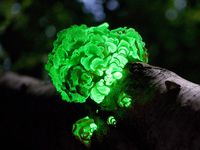Penicillium chrysogenum
Our editors will review what you’ve submitted and determine whether to revise the article.
Penicillium chrysogenum, species of fungus in the genus Penicillium (kingdom Fungi) that occurs across a variety of habitats and is especially common in moist areas, including forests and damp indoor environments. Penicillium chrysogenum is very closely related to P. rubens and P. notatum and has, at various times, been considered synonymous with either or both.
P. chrysogenum is a source of the antibiotic penicillin. The species was in fact the source from which Scottish bacteriologist Alexander Fleming originally discovered the antibiotic, although in 1928, at the time of Fleming’s discovery, the strain was named P. notatum. P. chrysogenum also is a common contaminant of foodstuffs and indoor environments, where its presence on surfaces or in the air can have negative effects on human health.
In addition to penicillin, P. chrysogenum produces various other substances. Among these substances are a yellow pigment known as chrysogine and an antibiotic known as xanthocillin.













